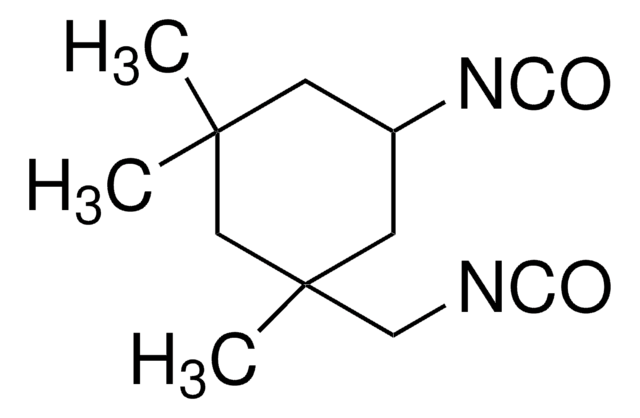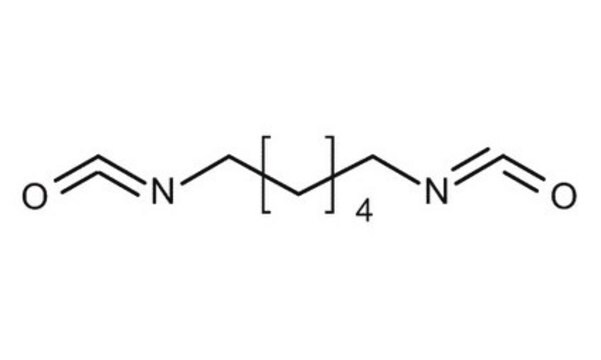Wichtige Dokumente
418005
Poly(hexamethylendiisocyanat)
viscosity 1,300-3,000 cP (25 °C)(lit.)
Synonym(e):
1,6-Diisocyanatohexane homopolymer, 1,6-Diisocyanatohexane polymer, HMDI homopolymer
About This Item
Empfohlene Produkte
Form
liquid
Qualitätsniveau
Brechungsindex
n20/D 1.502
Viskosität
1,300-3,000 cP(25 °C)(lit.)
Dichte
1.12 g/mL at 25 °C
SMILES String
O=C=NCCCCCCN=C=O
Suchen Sie nach ähnlichen Produkten? Aufrufen Leitfaden zum Produktvergleich
Allgemeine Beschreibung
Anwendung
Signalwort
Danger
H-Sätze
Gefahreneinstufungen
Acute Tox. 3 Inhalation - Skin Sens. 1 - STOT SE 3
Zielorgane
Respiratory system
Lagerklassenschlüssel
6.1C - Combustible acute toxic Cat.3 / toxic compounds or compounds which causing chronic effects
WGK
WGK 1
Flammpunkt (°F)
338.0 °F
Flammpunkt (°C)
170 °C
Persönliche Schutzausrüstung
Eyeshields, Faceshields, Gloves, type ABEK (EN14387) respirator filter
Hier finden Sie alle aktuellen Versionen:
Besitzen Sie dieses Produkt bereits?
In der Dokumentenbibliothek finden Sie die Dokumentation zu den Produkten, die Sie kürzlich erworben haben.
Kunden haben sich ebenfalls angesehen
Unser Team von Wissenschaftlern verfügt über Erfahrung in allen Forschungsbereichen einschließlich Life Science, Materialwissenschaften, chemischer Synthese, Chromatographie, Analytik und vielen mehr..
Setzen Sie sich mit dem technischen Dienst in Verbindung.









